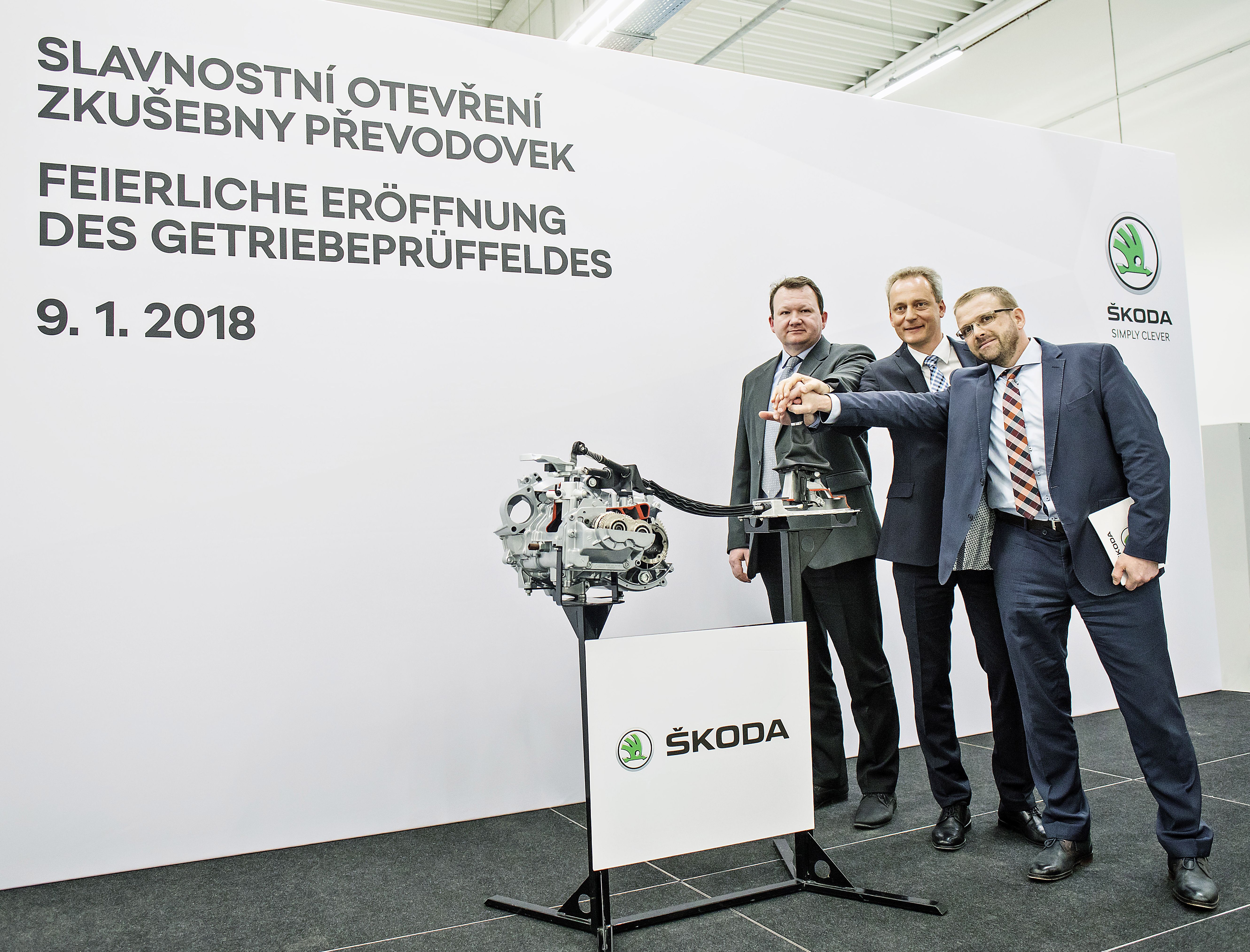The Velebný family in the right place at the right time
In 1925, grandfather Josef Velebný (1906-1989) was the first in his family to join ŠKODA. From 1946 he headed the body construction department and was involved in the development of the timelessly elegant ŠKODA models from the forties to the sixties, including interesting derivative versions developed abroad. He played a role in the fundamental technological changes that took place in the 1950s and 60s. The first step was the switch to the safer, more robust and more spacious all-metal bodies, which first saw the light of day in the ŠKODA 1200 “Sedan” from 1952. The start of production of the monocoque body ŠKODA 1000 MB marked another revolutionary change.
 Josef Velebný with models of ŠKODA cars at the start of the 1950s: ŠKODA 1101/1102 Tudor at the back; its successor the Š 1200 Sedan at the front.
Josef Velebný with models of ŠKODA cars at the start of the 1950s: ŠKODA 1101/1102 Tudor at the back; its successor the Š 1200 Sedan at the front.
55 years ago Velebný, as an experienced technician, was also involved in the creation of the TREKKA model, the predecessor of ŠKODA’s successful present-day range of SUVs. It was New Zealander Noel Turner, the owner of Motor Industries Ltd., a ŠKODA importer that assembled MBs from parts at Otahuhu near Auckland, who came up with the idea of making a cheap all-terrain vehicle for his country’s farmers. Josef Velebný spent 15 months in New Zealand, developing the car, launching its production and getting around 50 local suppliers involved in the process.
 Josef Velebný (centre) with New Zealand designer George Taylor (left), his colleague John Catchpole and their “baby”: the TREKKA SUV.
Josef Velebný (centre) with New Zealand designer George Taylor (left), his colleague John Catchpole and their “baby”: the TREKKA SUV.
The first two prototypes were tested in spring 1966, and limited-series manufacture of the TREKKA began on December 2 that year, running until 1972. The TREKKA inspired others to follow suit. The baton was first taken up by the general importer of ŠKODA cars to Pakistan. Velebný and his team built the first prototype, known as the SKOPAK (ŠKODA Pakistan), which went into limited-series production in May 1970. As well as simple two-seater pickups with no doors and nothing but a strap to stop the occupants from falling out, a flat truck with fold-down side panels, a taxi and even a special airport modification for driver and five passengers were made. In Istanbul Josef Velebný built the spacious Š 1202 Kamyonetleri for the Turkish market. His final mission abroad was in Costa Rica in 1977, where he helped launch the assembly of ŠKODA 120 L.






































